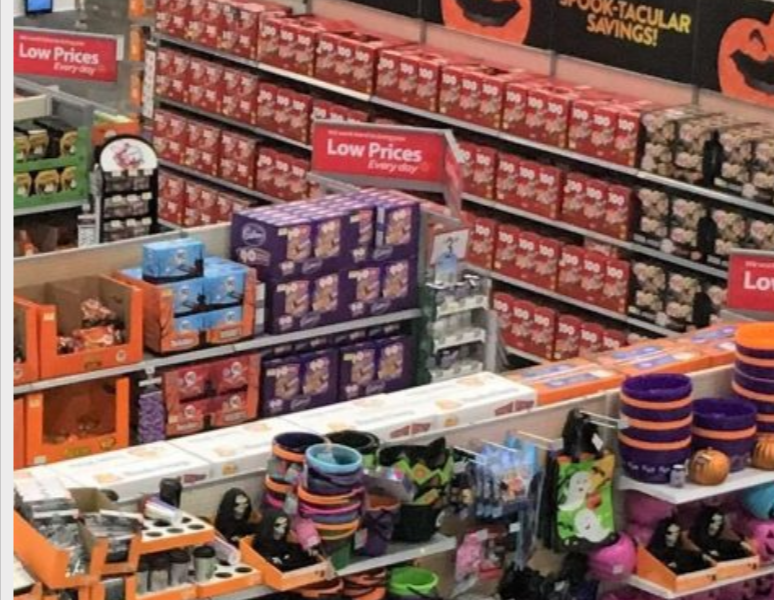The retail trade is consistently altering, and with the fast development of know-how, the way forward for merchandising is ready to evolve in thrilling and progressive methods. Merchandising, which includes the strategic placement and promotion of merchandise to maximise gross sales, is an important side of retail. As shopper habits shifts and new applied sciences emerge, retailers should adapt their merchandising methods to remain aggressive. This text explores the way forward for retail and the way merchandising will adapt to satisfy the altering panorama.
Understanding Merchandising in Retail
Merchandising is the apply of presenting merchandise in a approach that draws clients and encourages them to make a purchase order. It includes the whole lot from product placement and retailer structure to promotional shows and on-line product listings. Efficient merchandising helps retailers stand out from the competitors and drive gross sales.
Historically, merchandising has centered on in-store shows and seasonal promotions. For instance, retailers would prepare merchandise in a approach that catches the attention of buyers, reminiscent of inserting high-demand objects at eye stage or utilizing colourful signage to focus on gross sales. With the rise of e-commerce, merchandising has expanded to incorporate on-line methods like optimizing product descriptions, utilizing high-quality photographs, and personalizing suggestions based mostly on buyer preferences.
Present Tendencies in Retail Merchandising
Earlier than diving into the long run, it’s necessary to know the present tendencies shaping retail merchandising. These tendencies present a basis for understanding how merchandising will proceed to evolve.
1. E-commerce Development
The expansion of e-commerce has considerably impacted retail merchandising. Extra shoppers are buying on-line, and retailers have needed to adapt by optimizing their web sites and on-line shops. This consists of creating user-friendly interfaces, providing detailed product data, and guaranteeing quick and environment friendly supply. On-line merchandising methods are essential for capturing the eye of digital buyers.
2. Personalization
Personalization is changing into more and more necessary in retail. Shoppers anticipate tailor-made experiences that cater to their preferences and wishes. Retailers use knowledge analytics to know buyer habits and supply personalised product suggestions, reductions, and promotions. Personalised merchandising helps create a extra partaking buying expertise and will increase the chance of a sale.
3. Sustainability
Sustainability is a rising concern for shoppers, and this pattern is influencing merchandising methods. Retailers are specializing in selling eco-friendly merchandise and lowering waste of their operations. This consists of utilizing sustainable packaging, providing recycling packages, and highlighting the environmental advantages of sure merchandise. Merchandising efforts that align with sustainability values resonate with environmentally acutely aware buyers.
4. Omnichannel Retailing
Omnichannel retailing refers to offering a seamless buying expertise throughout a number of channels, together with on-line, in-store, and cellular. Retailers are integrating their on-line and offline operations to create a cohesive expertise for patrons. For instance, clients may browse merchandise on-line and decide them up in-store, or they may obtain personalised affords on their cellular gadgets whereas buying in a bodily retailer. Omnichannel merchandising ensures that clients obtain constant messaging and product availability, no matter how they select to buy.
The Way forward for Retail Merchandising
As we glance to the long run, a number of key tendencies and applied sciences are set to reshape retail merchandising. Retailers who embrace these adjustments will likely be higher positioned to satisfy the evolving calls for of shoppers and keep forward within the aggressive market.
1. Augmented Actuality (AR) and Digital Actuality (VR)
Augmented Actuality (AR) and Digital Actuality (VR) are poised to revolutionize retail merchandising. AR permits clients to visualise merchandise in their very own setting utilizing their smartphones or AR glasses. For instance, buyers can use AR to see how a bit of furnishings would look of their front room earlier than making a purchase order. This know-how enhances the buying expertise by offering a extra immersive and interactive solution to discover merchandise.
Digital Actuality (VR) takes this idea additional by creating totally immersive buying experiences. Prospects can use VR headsets to enter digital shops, the place they’ll browse merchandise, work together with digital gross sales assistants, and even make purchases. VR merchandising affords retailers the chance to create distinctive and memorable buying experiences that transcend the restrictions of bodily shops.
2. Synthetic Intelligence (AI) and Machine Studying
Synthetic Intelligence (AI) and machine studying have gotten integral to retail merchandising. AI-powered instruments can analyze huge quantities of information to establish tendencies, predict buyer habits, and optimize product assortments. For instance, AI may help retailers decide which merchandise are prone to promote nicely in particular places or throughout sure occasions of the 12 months. This data-driven method permits for extra correct and environment friendly merchandising selections.
Machine studying algorithms additionally allow personalised product suggestions based mostly on buyer preferences and buy historical past. By analyzing patterns in buyer habits, AI can counsel merchandise which are prone to enchantment to particular person buyers, rising the probabilities of a sale. As AI know-how continues to advance, it is going to play a bigger position in automating and optimizing merchandising methods.
3. Sustainable and Moral Merchandising
Sustainability and moral issues will play a central position in the way forward for retail merchandising. As shoppers turn out to be extra acutely aware of their environmental impression, they’re more and more searching for out merchandise that align with their values. Retailers might want to adapt by selling eco-friendly and ethically sourced merchandise.
Sustainable merchandising includes extra than simply providing inexperienced merchandise. It additionally consists of lowering waste within the provide chain, minimizing packaging, and offering details about the environmental impression of merchandise. Retailers who prioritize sustainability won’t solely meet the calls for of acutely aware shoppers but additionally contribute to a extra sustainable future.
Moral merchandising goes hand in hand with sustainability. Shoppers have gotten extra conscious of points like truthful commerce, labor practices, and animal welfare. Retailers might want to guarantee transparency of their provide chains and promote merchandise that adhere to moral requirements. This may embrace highlighting certifications, reminiscent of Honest Commerce or cruelty-free labels, and offering details about the moral practices of their suppliers.
4. Omnichannel and Seamless Buying Experiences
The way forward for retail is omnichannel, and merchandising methods might want to adapt accordingly. Retailers will proceed to combine their on-line and offline operations to create a seamless buying expertise for patrons. This consists of utilizing constant branding and messaging throughout all channels, providing real-time stock updates, and offering versatile achievement choices.
For instance, clients may begin their buying journey on-line by researching merchandise, then go to a bodily retailer to see the objects in particular person. They may use their cellular gadgets to test product availability or obtain personalised affords whereas in-store. After making a purchase order, they may select to have the objects delivered to their house or decide them up in-store. Omnichannel merchandising ensures that clients have a cohesive expertise, regardless of how they select to work together with the model.
5. Expertise-Pushed In-Retailer Merchandising
In-store merchandising may also profit from technological developments. Good cabinets, geared up with sensors and RFID know-how, can present real-time knowledge on product availability, buyer interactions, and stock ranges. This permits retailers to optimize product placement and be certain that in style objects are at all times in inventory.
Digital signage is one other know-how that can improve in-store merchandising. Digital shows can be utilized to advertise merchandise, spotlight particular affords, and supply dynamic content material that captures the eye of buyers. These shows may be up to date in real-time, permitting retailers to regulate their messaging based mostly on components like time of day, buyer demographics, or present promotions.
Contactless fee methods, reminiscent of cellular funds and digital wallets, may also affect in-store merchandising. As extra shoppers undertake these fee strategies, retailers can use them to supply personalised promotions and reductions. For instance, clients who use a selected fee app may obtain unique affords or loyalty rewards. By integrating fee methods with merchandising methods, retailers can create a extra handy and interesting buying expertise.
6. The Function of Knowledge in Merchandising
Knowledge will proceed to play an important position in the way forward for retail merchandising. Retailers are gathering extra knowledge than ever earlier than, from buyer preferences and buy historical past to social media interactions and on-line shopping habits. This knowledge can be utilized to tell merchandising selections, reminiscent of product choice, pricing, and promotional methods.
Predictive analytics, powered by AI and machine studying, may help retailers anticipate tendencies and make knowledgeable selections about which merchandise to inventory and the right way to market them. For instance, if knowledge reveals {that a} explicit product is trending on social media, retailers can rapidly reply by that includes it prominently of their merchandising efforts.
Knowledge additionally permits for extra personalised merchandising. By analyzing buyer knowledge, retailers can create tailor-made experiences that resonate with particular person buyers. This may embrace personalised product suggestions, focused promotions, and customised buying experiences. The extra knowledge retailers can acquire and analyze, the higher they’ll meet the wants and preferences of their clients.
Challenges and Alternatives within the Way forward for Merchandising
As merchandising methods evolve, retailers will face each challenges and alternatives. Adapting to new applied sciences and shopper expectations would require funding, innovation, and a willingness to vary.
1. Challenges
One of many primary challenges will likely be managing the transition to digital-first merchandising. As extra shoppers store on-line, retailers might want to be certain that their digital platforms are optimized for a seamless buying expertise. This consists of investing in user-friendly web sites, cellular apps, and e-commerce platforms. Retailers may also want to coach their workers to handle and keep these digital platforms successfully.
One other problem is staying forward of quickly altering shopper habits. Client preferences are always evolving, and retailers should be agile of their method to merchandising. This implies with the ability to rapidly reply to tendencies, alter product assortments, and replace advertising and marketing methods. Retailers who’re sluggish to adapt threat shedding market share to extra nimble opponents.
Privateness and knowledge safety are additionally vital challenges. As retailers acquire extra knowledge on their clients, they have to be certain that this knowledge is saved securely and used responsibly. Knowledge breaches can injury a retailer’s repute and erode buyer belief. Retailers might want to implement sturdy safety measures and be clear about how buyer knowledge is used.
2. Alternatives
Regardless of these challenges, there are quite a few alternatives for retailers who embrace the way forward for merchandising. Using know-how, reminiscent of AI, AR, and VR, affords the potential to create progressive and interesting buying experiences. Retailers who leverage these applied sciences can differentiate themselves from the competitors and appeal to a tech-savvy buyer base.
Sustainability and moral practices current one other alternative for retailers. By prioritizing these values, retailers can enchantment to a rising section of environmentally and socially acutely aware shoppers. This may result in elevated buyer loyalty and optimistic model notion.
Omnichannel retailing affords the chance to create a extra linked and handy buying expertise. Retailers who efficiently combine their on-line and offline operations can present clients with flexibility and selection, enhancing their general buying expertise.
Conclusion
The way forward for retail merchandising is filled with potentialities. As know-how continues to advance and shopper expectations evolve, retailers should adapt their merchandising methods to remain aggressive. By embracing improvements like AR, AI, and omnichannel retailing, retailers can create partaking and personalised buying experiences that resonate with trendy shoppers.
Sustainability and moral practices may also play a central position in the way forward for merchandising. Retailers who prioritize these values won’t solely meet the calls for of acutely aware shoppers but additionally contribute to a extra sustainable and accountable retail trade.
Whereas there will likely be challenges alongside the best way, the alternatives for progress and innovation in retail merchandising are huge. Retailers who’re prepared to put money into new applied sciences, keep agile of their method, and prioritize buyer expertise will likely be well-positioned for achievement in the way forward for retail. For these searching for experience and steering in navigating these adjustments, working with professionals like The Reset Staff may be invaluable in staying forward of the curve.









